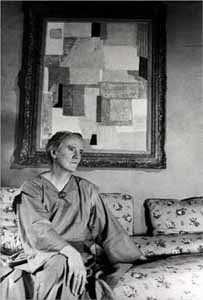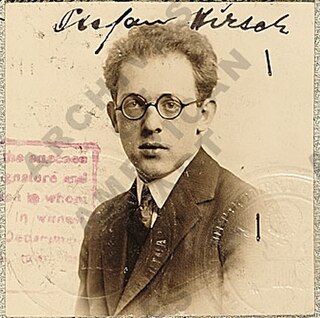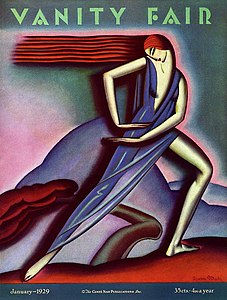
Frank Philip Stella is an American painter, sculptor and printmaker, noted for his work in the areas of minimalism and post-painterly abstraction. Stella lives and works in New York City.

James David Brooks was an American Abstract Expressionist, muralist, abstract painter, art teacher, and winner of the Logan Medal of the Arts.

Louis Schanker was an American abstract artist.

Seymour Fogel was an American artist whose artistic output included social realist art early in the century, abstract art and expressionist art at mid-century, and transcendental art late in the century. His drive to experiment led him to work with expected media – oil paints, watercolors, and acrylics – as well as unconventional media such as glass, plastics, sand, and wax.

Anne Ryan (1889–1954) was an American Abstract Expressionist artist associated with the New York School. Her first contact with the New York City avant-garde came in 1941 when she joined the Atelier 17, a famous printmaking workshop that the British artist Stanley William Hayter had established in Paris in the 1930s and then brought to New York when France fell to the Nazis. The great turning point in Ryan's development occurred after the war, in 1948. She was 57 years old when she saw the collages of Kurt Schwitters at the Rose Fried Gallery, in New York City, in 1948. She right away dedicated herself to this newly discovered medium. Since Anne Ryan was a poet, according to Deborah Solomon, in Kurt Schwitters’s collages “she recognized the visual equivalent of her sonnets – discrete images packed together in an extremely compressed space.” When six years later Ryan died, her work in this medium numbered over 400 pieces.

John Seery is an American artist who is associated with the lyrical abstraction movement. He was born in Maspeth, New York, was raised in Flushing, Queens and as a teen, moved to Cincinnati, Ohio.

Gifford Beal was an American painter, watercolorist, printmaker and muralist.

Edward Dugmore was an abstract expressionist painter with close ties to both the San Francisco and New York art worlds in the post-war era following World War II. Since 1950 he had more than two dozen solo exhibitions of his paintings in galleries across the United States. His paintings have been seen in hundreds of group exhibitions over the years.

Moses Soyer was an American social realist painter.

Joseph Hirsch (1910–1981) was an American painter, illustrator, muralist and teacher. Social commentary was the backbone of Hirsch's art, especially works depicting civic corruption and racial injustice.
Roland Conrad Petersen is a Danish-born American painter, printmaker, and professor. His career spans over 50 years, primarily in the San Francisco Bay Area and is perhaps best-known for his "Picnic series" beginning in 1959 to today. He is part of the Bay Area Figurative Movement.
George Earl Ortman was an American painter, printmaker, constructionist and sculptor. His work has been referred to as Neo-Dada, pop art, minimalism and hard-edge painting. His constructions, built with a variety of materials and objects, deal with the exploration off visual language derived from geometry—geometry as symbol and sign.
Robert Kushner(; born 1949, Pasadena, CA) is an American contemporary painter who is known especially for his involvement in Pattern and Decoration. He has been called "a founder" of that artistic movement. In addition to painting, Kushner creates installations in a variety of mediums, from large-scale public mosaics to delicate paintings on antique book pages.

Paul Kelpe was a German-born American abstract painter. His constructions integrating found objects into paintings were the first such works created in the United States and he painted two of the five Williamsburg murals, the first abstract murals in the United States. In addition to his mural work for various American government projects, he was an innovative independent painter and university art professor. He was a pioneer of American abstract art, including his work in Chicago during a period in which abstracts were not well accepted or appreciated.

Karl Knaths was an American artist whose personal approach to the Cubist aesthetic led him to create paintings which, while abstract, contained readily identifiable subjects. In addition to the Cubist painters, his work shows influence by Paul Cézanne, Wassily Kandinsky, Utagawa Kuniyoshi, Paul Klee, Stuart Davis, and Agnes Weinrich. It is nonetheless, in use of heavy line, rendering of depth, disciplined treatment of color, and architecture of planes, distinctly his own.

Stefan Hirsch was an American artist. Many of his paintings have the hard edges, smooth surfaces, and simplified forms of the precisionists and their typical subjects—cityscapes and industrial scenes—are sometimes also his, but in general his works have an emotional element and, as one critic as said, "take on an otherworldly tone" that sets them apart. In addition to work showing a personal version of precisionism, he produced paintings, drawings, and prints in the social realist, Mexican muralist, and surrealist styles as well as still lifes, portraits, and landscapes that defy easy classification. His work achieved critical recognition from 1919 onward, has been widely collected, and is today found in many American museums including the Phillips Collection, the Whitney Museum of American Art, the Metropolitan Museum of Art, and the Corcoran Gallery.

Caroline Speare Rohland was an American artist and muralist who created three post office murals, as part of the art projects for the New Deal's Section of Painting and Sculpture. In addition to the three murals, Rohland has works in the permanent collections of the Library of Congress, The Honolulu Academy of Art, the New Mexico Museum of Art and the Whitney Museum of American Art.
Sidney Goodman was an American figurative painter and draftsman from Philadelphia, PA who explored the human form. Goodman received public notice in the early 1960s for his oil paintings, leading to his inclusion in the 1973 Whitney Biennial. In 1996, the Philadelphia Museum of Art presented a retrospective show of Goodman's paintings and drawings.

Edmund Archer (1904–1986) was an American artist best known for his portraits of African Americans. He was born in Richmond, Virginia, to parents who were both culturally and socially prominent in that city. Having taken an early interest in painting, he took art classes continually from childhood into his adult years. His long career included periods spent in Richmond, Paris, New York, and Washington, D.C. In addition to painting, he served as an assistant curator at the Whitney Museum of American Art and an instructor at the Corcoran School of Art. His portrait style tended toward a poster-like flatness early in his career and later toward a more traditional modeled style. He painted with a high degree of realism throughout his career and rarely experimented with any degree of abstraction. Galleries and museums gave him frequent exhibitions and both individual and institutional collectors provided him with income from sales. In 1938, a critic said he was then considered to be "one of the best of the young artists in the United States". A few months later, another critic credited his success to hard work: "Edmund Minor Archer has had advantages. His success story is no Horatio Alger tale. It is a story of an earnest and deeply talented artist who has worked and studied in humility and devotion, and has early reached the top, hard step by hard step".


























